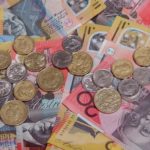Gold traded below more than four-month high as tension between Ukraine and the Russian Federation declined, easing demand for bullion as a store of value. Also fanning negative sentiment, assets in the SPDR Gold Trust, the biggest bullion-backed ETF, were unchanged yesterday for a fifth day, the longest streak holdings have held steady in almost a year.
On the Comex division of the New York Mercantile Exchange, gold futures for settlement in April fell 0.26% to trade at $1 334.40 per troy ounce by 07:47 GMT. Prices touched a session high at $1 338.20 per troy ounce, while day’s low was touched at $1 333.20 an ounce. Yesterday futures settled at $1 336.50, losing 1.1% for the day, the most since January 30 as Russian President Vladimir Putin said there was no immediate need to invade Ukraine.
The precious metal touched $1 355.00 per troy ounce on March 3rd, the strongest since October 30, as tensions between Russia and Ukraine escalated.
Gold futures are 11% up this year and capped the first back-to-back monthly increase in February since the two-months through August, after a recent unrest in emerging markets, including Ukraine, and signs of slowing US growth, boosted demand for haven assets.
Putin, in his first public remarks, after Ukraine announced the region of Crimea had been seized by Russian forces, said while he kept the right to use military forces to defend ethnic Russians, there was no immediate necessity to do so at the moment.
“Short term, the uncertainty’s still here and gold fulfills its purpose as an insurance asset, and as a diversifier,” Dominic Schnider, head of commodities research at UBS AG’s wealth-management unit, said from Singapore, cited by Bloomberg. “The medium to long term is still negative for gold as we get more clarity on growth and move toward U.S. monetary policy normalization.”
Chinese demand
On the Shanghai Gold Exchange, trading volumes for spot bullion of 99.99 percent purity declined to a three-week low yesterday.
Higher bullion prices have hurt demand in China, which according to data by the World Gold Council released last week, overtook India as the largest global consumer last year, consuming a record 1 066 tons.
Fed stimulus outlook
Data due to be released on Friday may show US payrolls rose 150 000 in February, after increasing 113 000 in the previous month. In December, non-farm payrolls increased mere 74 000, the least since May 2012.
Federal Reserve Chair Janet Yellen said last week that central bank’s officials were “open to reconsidering” the pace of reductions in monthly bond purchase, should the economy falter, in contrast with her comments made earlier in February, that US economy has gained enough strength in order to withstand reduction of monetary stimulus.
At the same time, Fed officials will try to determine whether the weakness economy has recently demonstrated is due to temporal factors, before their next policy meeting scheduled for March 18-19th.
“Unseasonably cold weather has played some role,” Yellen said in her testimony in front of the Senate Banking Committee on Thursday. “What we need to do, and will be doing in the weeks ahead, is to try to get a firmer handle on exactly how much of that set of soft data can be explained by weather and what portion, if any, is due to softer outlook.”
The central bank announced in December that it will pare monthly bond-buying purchases by $10 billion, after which it decided on another reduction of the same size at the meeting on policy in January, underscoring that labor market indicators, which “were mixed but on balance showed further improvement”, while nation’s economic growth has “picked up in recent quarters.”
On Monday, the Institute for Supply Management (ISM) reported that manufacturing activity in the United States expanded at a faster than projected pace in February, which eased concerns that the economy may remain vulnerable. The corresponding PMI advanced to a reading of 53.2 last month from 51.3 in January, while analysts had expected that the index will climb less, to 52.0 in February. Values above the key level of 50.0 are indicative of expansion in activity.
Federal Reserve will probably continue to pare stimulus by $10 billion at each policy meeting before exiting the program in December, according to a Bloomberg News survey of 41 economists, conducted on January 10th.
Assets in the SPDR Gold Trust, the biggest bullion-backed ETP, remained at 803.70 tons yesterday for a fifth day, the longest streak holdings have held steady in almost a year. In 2013, the fund has lost 41% of its holdings. A total of 553 tons has been withdrawn last year. Billionaire hedge-fund manager John Paulson who holds the biggest stake in the SPDR Gold Trust told clients at the end of last year that he wouldn’t invest more money in his gold fund because it isn’t clear when inflation will accelerate. However, a government report revealed that the owner of the largest stake in the SPDR Gold Trust, kept his holdings unchanged in the fourth quarter of 2013.





